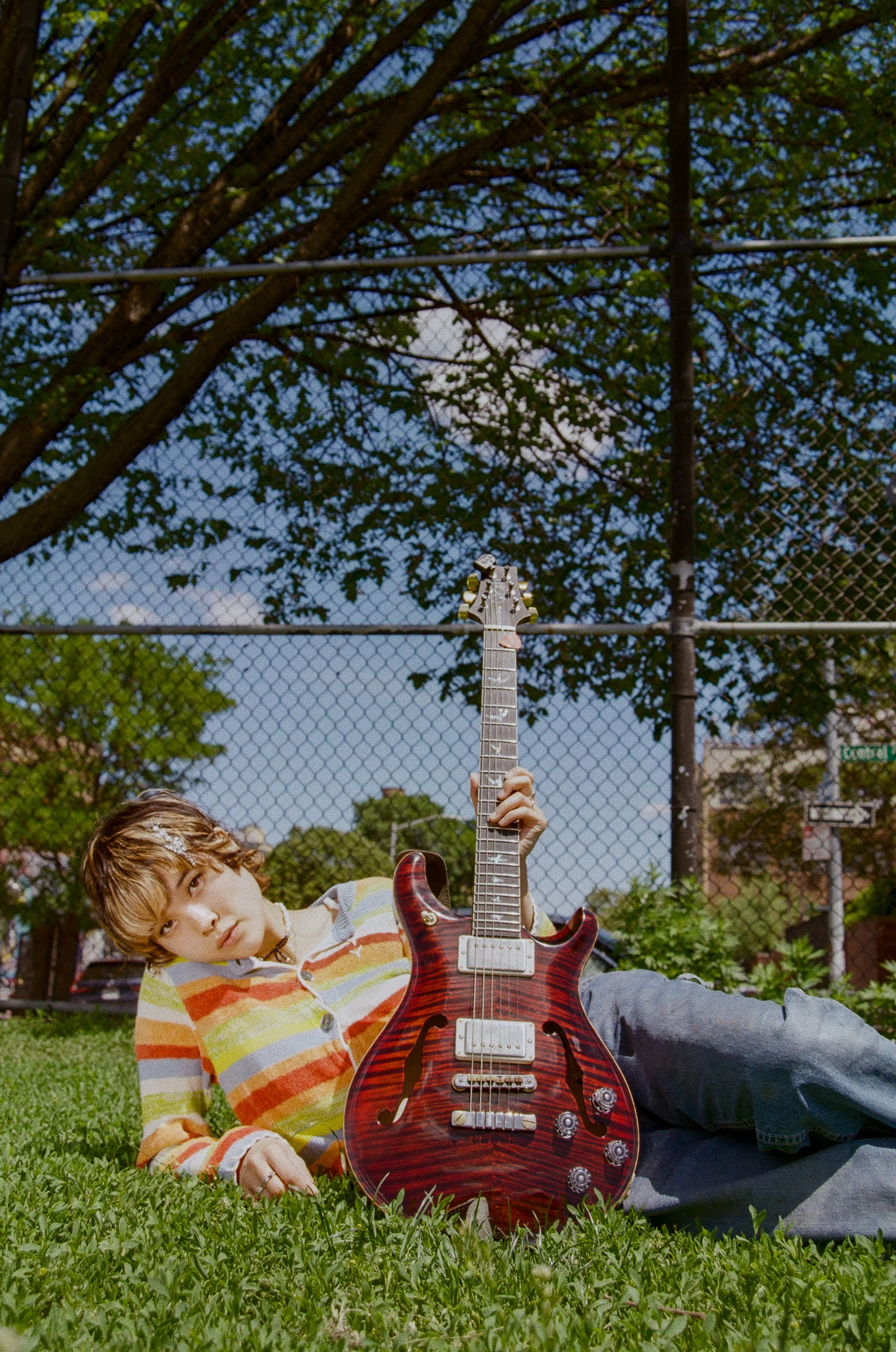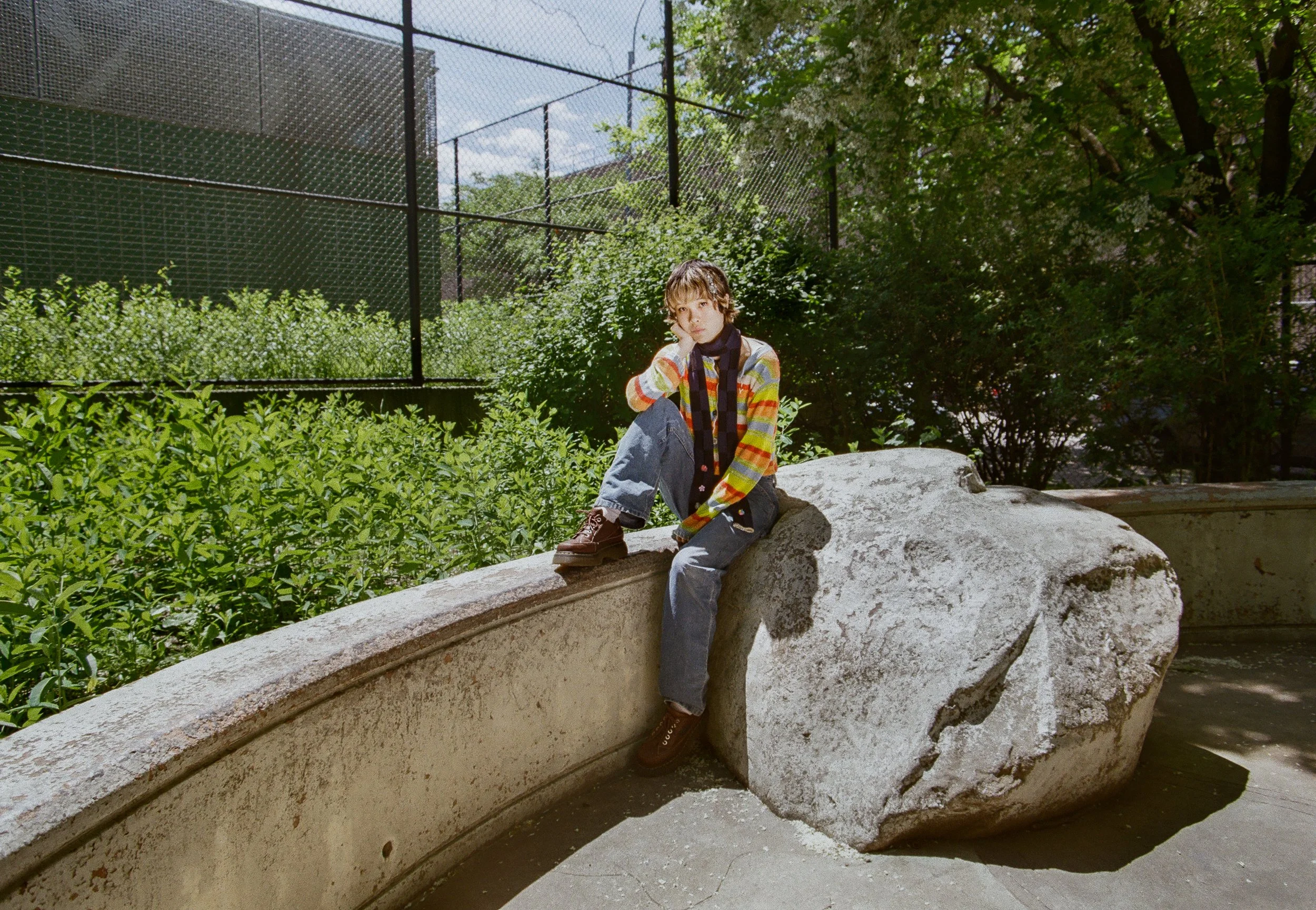Q&A: Mei Semones Finds Harmony Between City Streets and Forest Dreams in Her Debut Album ‘Animaru’
INTERVIEW
INTERVIEW
☆ BY SHEVON GREENE ☆
Photo by Dylan Vanessa
SOMEWHERE BETWEEN THE SCREECH OF NEW YORK CITY TRAINS — and the hush of a forest memory, Mei Semones finds her sound. The Brooklyn-based, Berklee-trained singer-songwriter and guitarist blends bossa nova, jazz, indie rock, and chamber pop with effortless grace—and her debut full-length album, Animaru, is proof. Named after the Japanese pronunciation of the word “animal,” the record explores the quiet power of instinct and tender self-reflection.
Filled with instrumental intricacy and lyrical intimacy, Animaru builds on the foundation of her 2024 EP Kabutomushi, capturing Semones’ personal and artistic journey. This year, she’s embarking on a tour across the US, Canada, and Asia—including a landmark performance at Japan’s Fuji Rock Festival, her biggest show to date and a major milestone in her career.
The Luna Collective caught up with Semones to talk about her creative process, inspirations, and the world behind Animaru. Read below to learn more.
Photo by Dylan Vanessa
LUNA: Your music blends bossa nova, jazz, indie rock, and chamber pop. How do you approach integrating those genres into a cohesive sound?
MEI SEMONES: Honestly, I don't think about it too much. I try to write songs I like, and what comes out is naturally a blend of different genres because that's what I listen to and have studied.
LUNA: In “Dangomushi,” you use wide-interval arpeggios reminiscent of “Wakare no Kotoba.” Can you talk about your approach to guitar composition and how you develop those intricate parts?
MEI SEMONES: A lot of it comes from what I practiced growing up and studied in school. I went to Berklee to study jazz guitar and did jazz in high school too. My writing is inspired by transcriptions, voicings, and chord progressions I've learned and loved over the years.
LUNA: You’ve mentioned artists like João Gilberto and Jim Hall. How have they influenced your style?
MEI SEMONES: João Gilberto is my favorite Brazilian musician. I love his singing style and chord voicings. Jim Hall is one of my favorite guitarists—his use of space and restraint really stuck with me.
LUNA: Songs like “Zarigani” and “Donguri” incorporate animal themes. What draws you to using animal imagery?
MEI SEMONES: My lyrics are inspired by everyday life and past memories. Some songs come from childhood memories, like playing in the forest behind my house. “Donguri” imagines being a little animal in that forest. So a lot of the nature themes tie back to those personal memories.
LUNA: The album title Animaru reflects a theme of embracing instinct. How does that concept manifest throughout the record?
MEI SEMONES: A few songs, like “Animaru” and “I Can Do What I Want,” really highlight that theme—following your instincts and not worrying about others' opinions. I didn’t set out to write around a theme, but once I reflected, I saw that thread come through.
LUNA: “Dumb Feeling” captures a sense of contentment with city life. How has living in New York influenced your music and lyrics?
MEI SEMONES: I often write about what’s around me. That song came from looking out my window, hearing trains, observing the street. So New York shows up in my lyrics. Musically, being in the same city as my band has helped us grow and sound more cohesive too.
LUNA: You often switch between English and Japanese. How do you decide which language to use?
MEI SEMONES: I just go with what feels natural and fits the music. Since I grew up bilingual, it feels more true to myself to use both. It’s how I speak and think, so it makes sense that it’s how I write too.
Photo by Dylan Vanessa
LUNA: “I Can Do What I Want” has a strong message of self-empowerment. Can you share what inspired it?
MEI SEMONES: It’s about growing into myself. A few years ago, I was more unsure, especially in my teens and early college years. But now I’m more confident, and I like who I am. That realization inspired the song.
LUNA: You’ve been working with your band since Berklee. How has your collaborative process evolved?
MEI SEMONES: I write the chords, lyrics, and melody, then bring it to the band. We arrange it together. I guide the general structure, but they write their own parts. It’s grown from just one or two people to a full five-piece band now.
LUNA: You recorded Animaru at a farm studio in Connecticut. Did the setting influence the sound?
MEI SEMONES: Definitely. You can hear crickets and sometimes cows in the background. We took some of it out, but a lot remains, especially since a lot of the drums, guitar, and strings were recorded in a barn, which has specific acoustics that shaped the sound too.
LUNA: You’ve mentioned Haruki Murakami as a favorite author. How has his writing influenced your lyrics?
MEI SEMONES: Probably more subconsciously. When I read his books while writing, I find the themes sometimes bleed into my lyrics. I like how straightforward his characters and dialogue are—that kind of simplicity resonates with me.
LUNA: I’m excited for your tour! Is there anything you're especially excited or nervous about?
MEI SEMONES: I’m truly excited for every show, especially cities we haven’t headlined before. Toronto, Boston, and LA are sold out, so that’s exciting. I’m also looking forward to playing in Chicago. And we’re playing full band in Japan at Fuji Rock Festival—that’ll be our biggest crowd yet. Then we head to Taipei and Seoul, which will be my first time in both cities.
Photo by Dylan Vanessa




